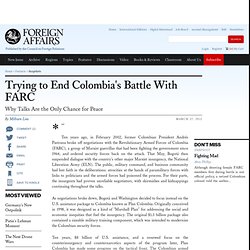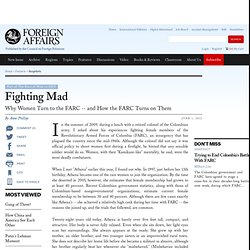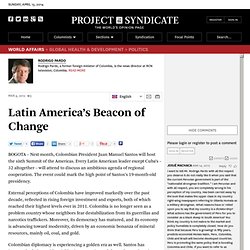

Secret Service prostitution scandal: Sexism in Colombia. Mandel Ngan/AFP/Getty Images.

When President Obama arrived in Colombia this weekend for the Summit of the Americas, he was greeted with less-than-welcome news: Eleven Secret Service agents had been suspended and sent home for soliciting prostitution in the city of Cartagena. After one of the women complained to the police about not receiving proper payment, the story turned into the "biggest scandal in Secret Service history. " As of yesterday, as many as 20 members of the Secret Service and U.S. military seem to have been involved. That this happened, I believe, is a result of, and will add to, the image of overly sexualized Latin American women. The reputation Colombia has for “its women” is notorious and stereotypically sexist. What many fail to notice, however, is that this “hotness” comes from a sad place, from a deeply patriarchal Catholic society that cannot see women outside the virgin/whore dichotomy. The U.S. media also helps to perpetuate the stereotype. Ending Colombia's Battle With FARC.
Ten years ago, in February 2002, former Colombian President Andrés Pastrana broke off negotiations with the Revolutionary Armed Forces of Colombia (FARC), a group of Marxist guerrillas that had been fighting the government since 1964, and ordered security forces back on the attack.

That May, Bogotá then suspended dialogue with the country's other major Marxist insurgency, the National Liberation Army (ELN). The public, military command, and business community had lost faith in the deliberations; atrocities at the hands of paramilitary forces with links to politicians and the armed forces had poisoned the process. Trying to End Colombia's Battle With FARC. Fighting Mad. In the summer of 2009, during a lunch with a retired colonel of the Colombian army, I asked about his experiences fighting female members of the Revolutionary Armed Forces of Colombia (FARC), an insurgency that has plagued the country since the mid-1960s.

Although the colonel did not say it was official policy to shoot women first during a firefight, he hinted that any sensible soldier would do so. Women, with their "Kamikaze-like" mentality, he said, were the most deadly combatants. When I met "Athena" earlier this year, I found out why. In 1997, just before her 13th birthday, Athena became one of the rare women to join the organization. By the time she deserted in 2005, however, she estimates that female membership had grown to at least 40 percent. Twenty-eight years old today, Athena is barely over five feet tall, compact, and attractive. To continue reading, please log in. Don't have an account? Register Register now to get three articles each month. Have an account? "Latin America’s Beacon of Change" by Rodrigo Pardo. Exit from comment view mode.

Click to hide this space BOGOTA – Next month, Colombian President Juan Manuel Santos will host the sixth Summit of the Americas. Every Latin American leader except Cuba’s – 32 altogether – will attend to discuss an ambitious agenda of regional cooperation. The event could mark the high point of Santos’s 19-month-old presidency. External perceptions of Colombia have improved markedly over the past decade, reflected in rising foreign investment and exports, both of which reached their highest levels ever in 2011.
Colombian diplomacy is experiencing a golden era as well. Each of these leaders governs his country in the region’s nationalist tradition of caudillo rule. Santos’s predecessor, Álvaro Uribe, endured tensions with Venezuela and Ecuador because of their alleged support for the FARC, a Marxist-Leninist guerilla insurgency that funds itself largely through drug trafficking. Mercury's Poisonous, Profitable Role in the New Gold Rush. As he clambered out of bed and onto his feet one morning late last year, Miguel Angel Cardona, 62, felt his body betray him.

His head grew so heavy it pulled him tumbling back down. “You feel fuzzy, like you’re drunk,” recalls the grandfather of nine, who’s spent most of his life in Segovia, a gold-mining town in northwestern Colombia. In the days that followed he noticed numbness in his hands and fingertips. He lost 12 pounds, no longer able to stomach the meat, rice, and fried plantains his wife sent with him to work each day at a single-shaft mine on the edge of town. He worked with drums filled with mercury, water, and crushed stone to process gold. In Segovia, nearly 100 shops process the gold that prospectors bring down from the foothills of the Andes Mountains.
With the price of gold reaching a record last year, Segovia is a boomtown in the 19th century style, with casinos and brothels squeezed between mining businesses along its main streets.